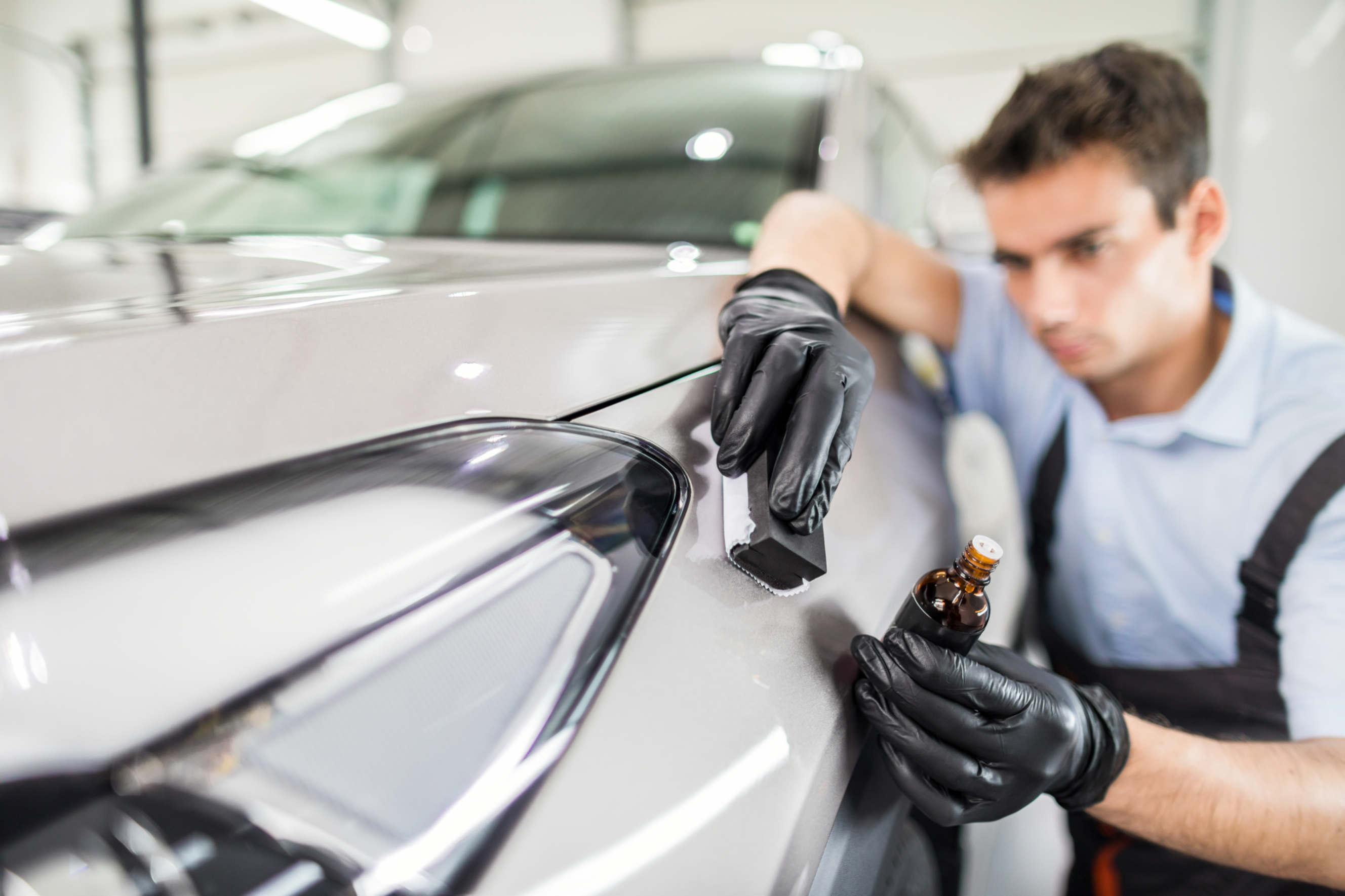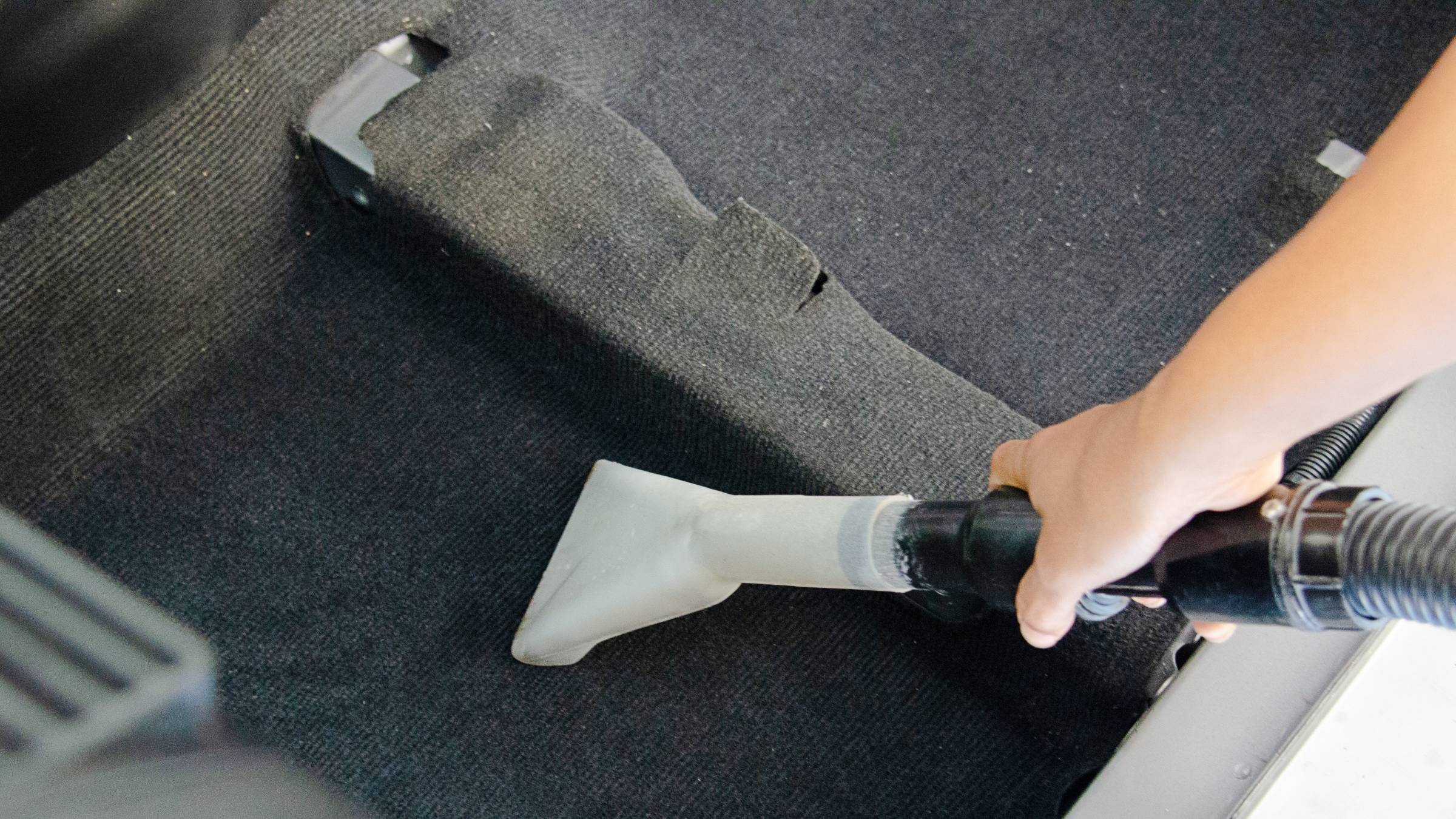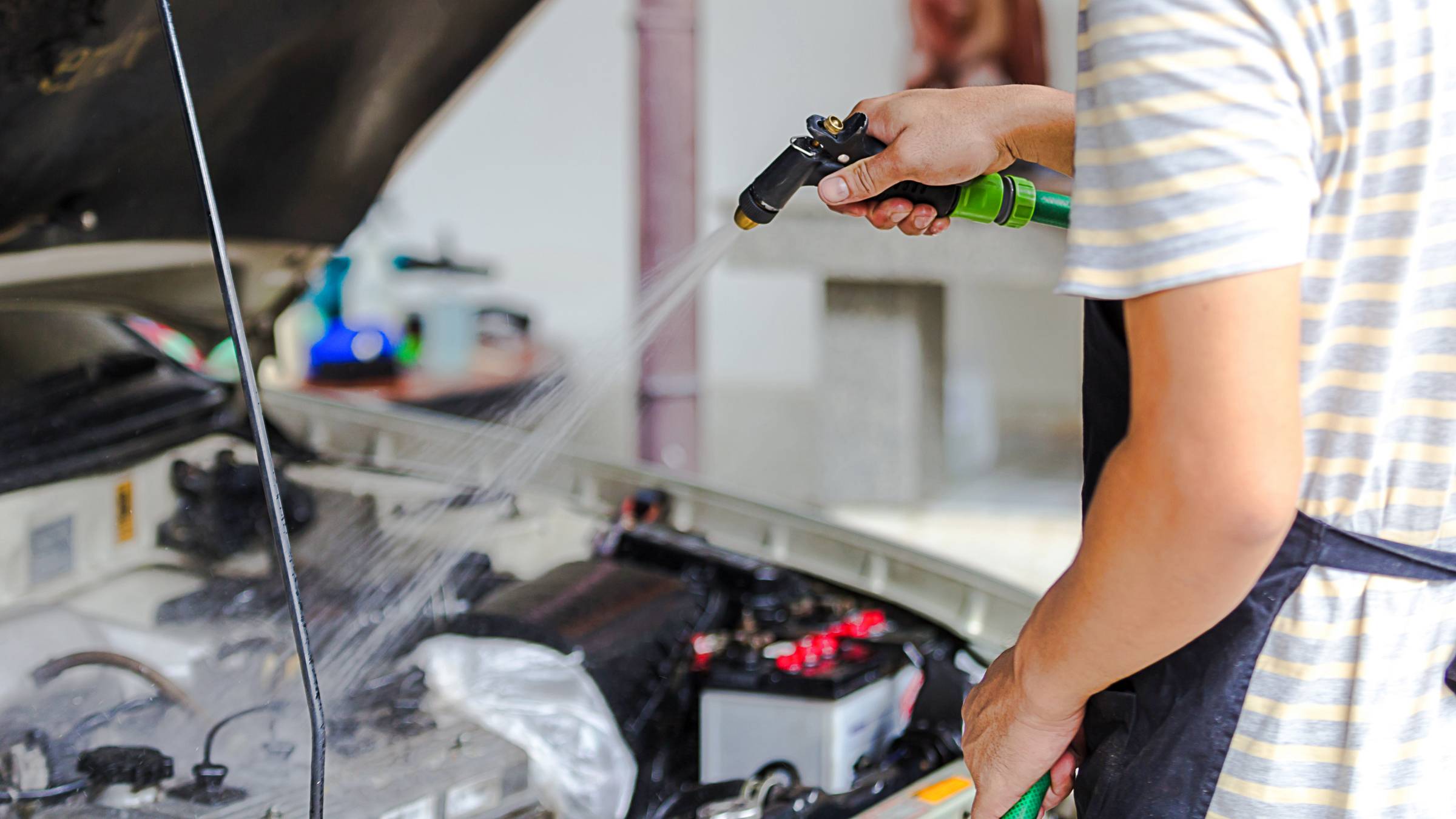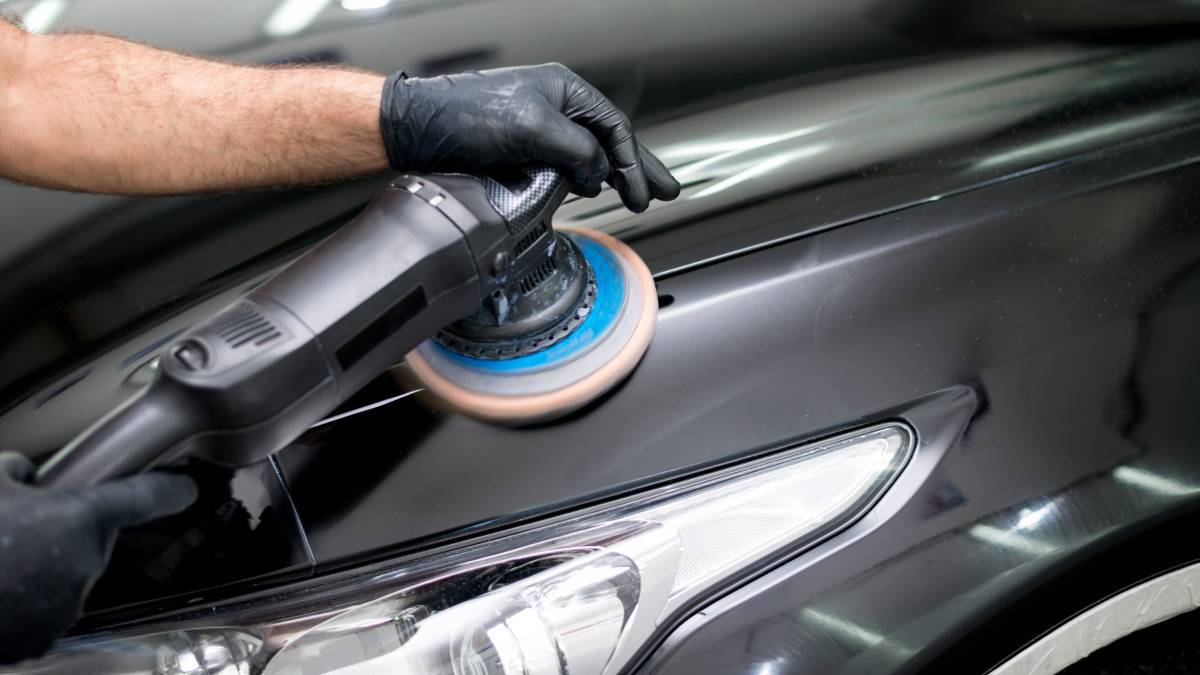- Home/
- Comparisons/
- Car Detailing/
- Car Polish vs Wax
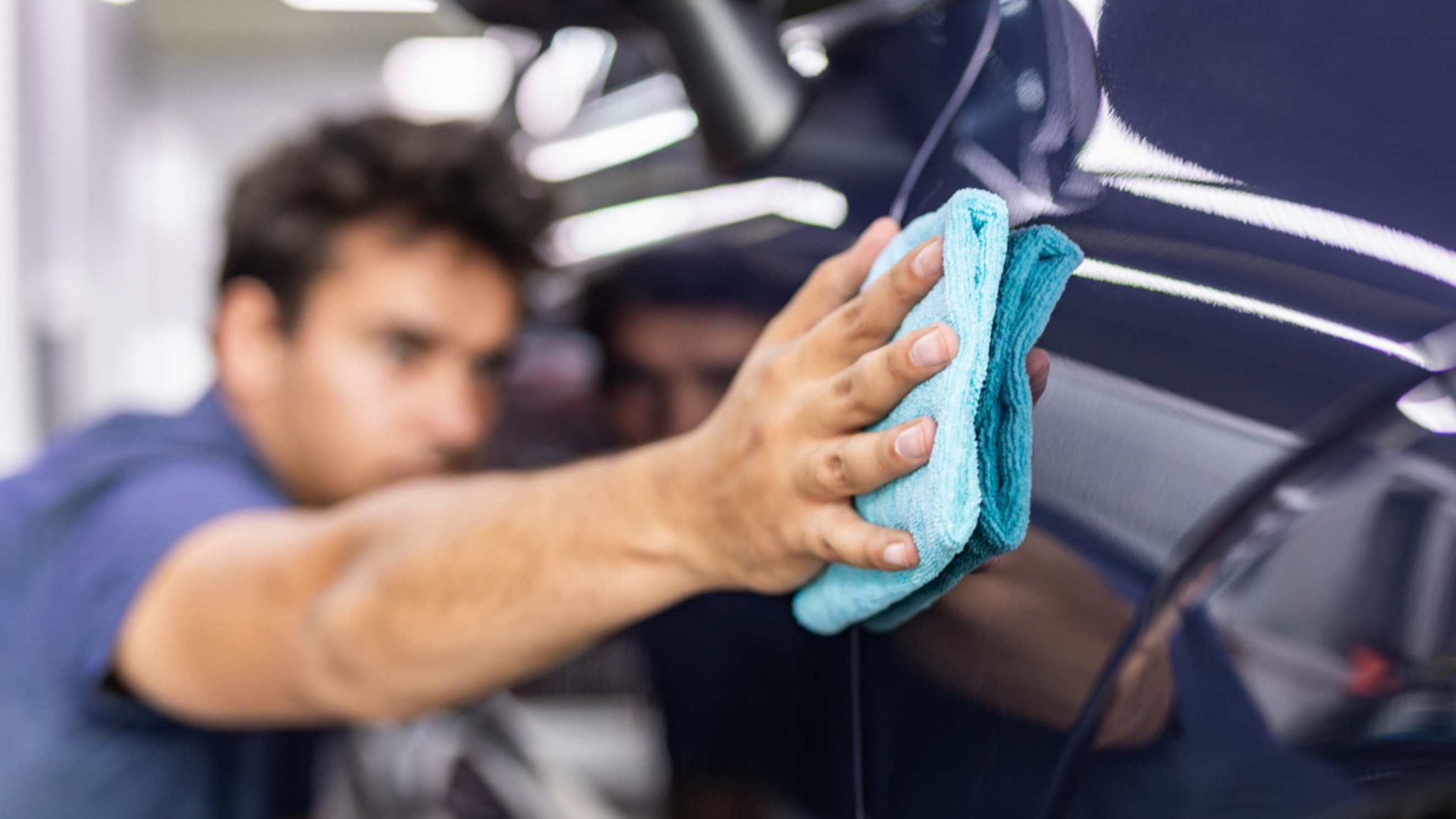
Car polish vs wax: Which is the better choice for your car?
Comparing car polish and wax based on surface protection, shine and gloss, application, and more.
Hire a car detailing expertPublished on

Written by Cielo B.
Staff Writer
Read more about our contributor
Key Facts
Car polish is a mild abrasive liquid component used to remove dirt, light scratches, and imperfections on car paint. It comes in liquid and paste forms, with finer grits for minor blemishes and coarser grits for deeper defects.
Car wax is a protective coating that adds shine and shields car paint from environmental damage like sunlight, water, and moisture.
Having your car look brand-new all the time is a dream. Unfortunately, the reality is that the paintwork becomes dull over time, especially if you frequently drive and park your car outdoors.
The good news is that car detailing products such as car wax and polish could bring back your vehicle’s radiant shine. Find out how they differ in this car polish vs wax guide so you can restore its shine and gloss without damaging the paint job.
What is car polish?
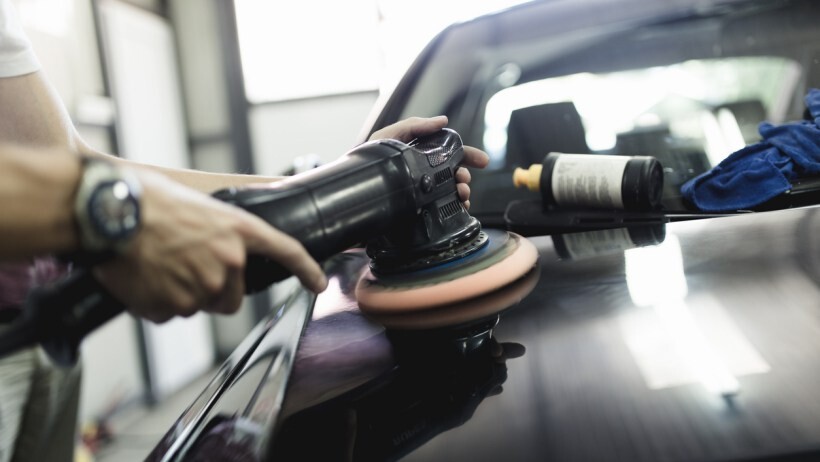 A technician utilises a polishing tool to refine the paint and surface of a car, ensuring a flawless, showroom-quality shine (Source: iStock)
A technician utilises a polishing tool to refine the paint and surface of a car, ensuring a flawless, showroom-quality shine (Source: iStock)
A car polish or auto paint polish is made of mild, chemical-based abrasives that can help clear the painted surface of your car from dirt and grime. It can help fix minor imperfections as well, like light scratches and swirl marks, helping smoothen your car’s paintwork.
There are two main kinds of car polish: a finer-grit polish for removing minor car blemishes and a coarser-grit polish for deep scratches and defects.
Car polish also comes in various forms: liquid and paste. Liquid car polish has a consistent finish that allows you to easily apply and spread it evenly on your car. Meanwhile, car polish paste has a thicker, more solid component that requires more physical effort to apply. But, do take note that this car polish lasts longer and offers better control than liquid polish.
Auto restoration experts often use car polish to prepare a car’s painted surface before sealing and waxing. This helps the wax, sealants, ceramic coatings, and other protective coatings adhere to the painted surface.
What is car wax?
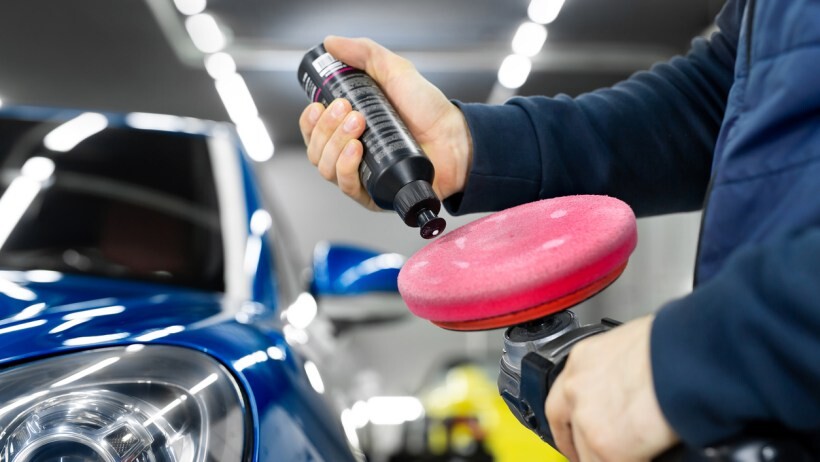 A mechanic using a specialised car waxing tool to refine a blue car (Source: iStock)
A mechanic using a specialised car waxing tool to refine a blue car (Source: iStock)
Car wax is a protective coating applied to the exterior surfaces of vehicles, designed to enhance their shine and safeguard the paint. It is typically made from a blend of natural and synthetic ingredients. Natural wax is often derived from carnauba palm leaves, which provide a rich, warm lustre. Synthetic wax, on the other hand, consists of man-made polymers and resins that offer greater durability and longer-lasting protection.
Like car polish, car wax comes in many types, mainly:
Paste wax - for high-glossy finish and long-lasting paint protection
Liquid wax - for a balanced shine and lasting protection
Supplementary spray wax - for quicker waxing applications
2-in-1 wash & wax - for combined car cleaning and shining
Car wax vs car polish: What’s the difference between the two?
Based on the definitions alone, it’s clear that both car wax and car polish can help improve the overall appearance of a car. However, each has different applications and purposes, so here’s a more in-depth comparison of car wax vs polish to help you understand which is better for your car’s needs.
In terms of surface protection
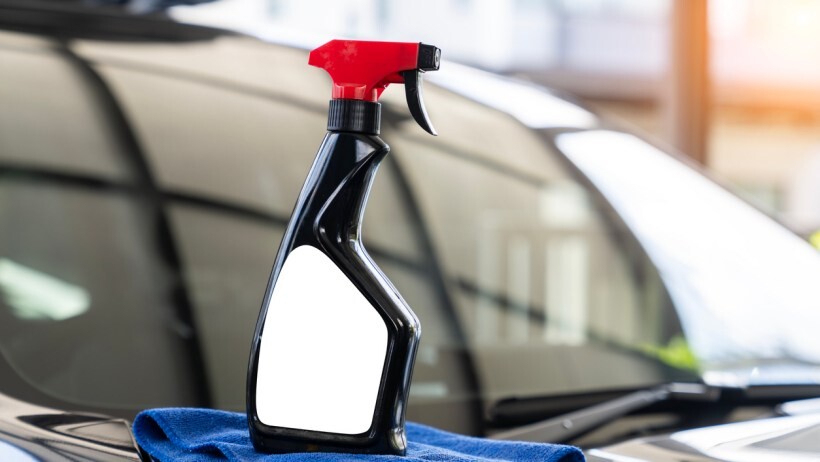 A professional-grade car wax ready for use on a vehicle's surface (Source: iStock)
A professional-grade car wax ready for use on a vehicle's surface (Source: iStock)
Even though you already have a decent parking space with ample shade at home, you may still have to leave the car out in the open sometimes. This is why it’s important that your car has a protective coating that could help shield the car against sunlight, water, moisture, and other environmental factors. And between car polish and car wax, the latter is much more effective when it comes to surface protection.
Car wax forms a barrier that helps shield the car from harmful UV radiation, preventing the paint from fading and deteriorating. It also helps deter dirt, dust, and bird droppings from sticking to the paint, reducing the likelihood of scratching and staining the exterior of a car while cleaning.
Moreover, automotive wax creates a hydrophobic layer that helps repel water and moisture. This protects the car’s metal surfaces from rust and corrosion.
In contrast, car polish alone doesn’t provide surface protection for your car. It simply removes all the minor imperfections to prep the car for waxing.
In terms of shine and gloss
Car wax and car polish have different roles in enhancing your car’s shine and gloss. Car wax adds a protective layer that gives the paint a deep, glossy shine and helps shield it from environmental damage. The result is a warm, reflective finish that can last for weeks.
On the other hand, car polish is used to remove imperfections like scratches and oxidation, smoothing the paint surface. This process can enhance shine, but its main purpose is to prepare the paint for waxing. The gloss from polish is often sharper and more defined.
In terms of correcting car defects
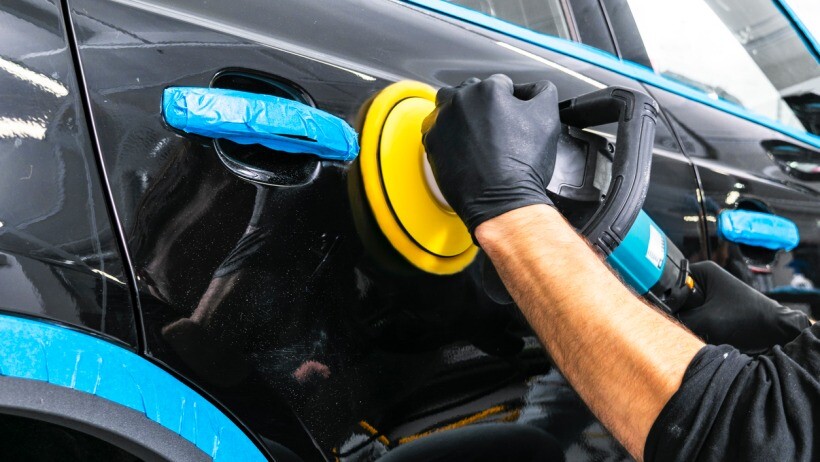 A skilled technician using specialised equipment to meticulously polish and refine the finish of a vehicle (Source: iStock)
A skilled technician using specialised equipment to meticulously polish and refine the finish of a vehicle (Source: iStock)
Car polish is more effective than car wax in correcting car defects due to the presence of a mildly abrasive liquid compound. This helps strip off a thin layer of the car’s paint, removing oxidised paint marks and levelling out scratches.
Meanwhile, car wax creates a thin film on the painted surface, which, when light reflects, makes the paint look smoother. So, instead of providing a permanent solution to fix car defects like car polish, car wax works to cover and fill scratches and discoloured marks on the car’s paintwork.
Although car wax offers lasting protection, the protective layer slowly strips off after six months, causing the scratches and marks to appear again. This is why many prefer using polish for car restoration and correcting car defects.
In terms of cost and value
Wax is more affordable than polish, with prices ranging from $7 to $195. This is because car wax is made of natural ingredients like Carnauba wax. Even those types made from synthetic polymers are still more affordable than car polish.
Car polish is much more expensive because the formulation requires the right balance of abrasives and cleaners. In Australia, car polish costs £7 to $423. This ensures that the polish can correct car defects without damaging the paint.
Moreover, the polishing process is more labour-intensive, requiring the assistance of an expert. While this might add to the overall car detailing cost, investing in this service will help you avoid the risk of damaging the clear and underlying layers of your car paint.
However, remember that car polish works to simply restore the shine of your vehicle, and not to offer protection. So, it would be more valuable to apply car polish with wax for long-lasting shine and gloss.
In terms of application
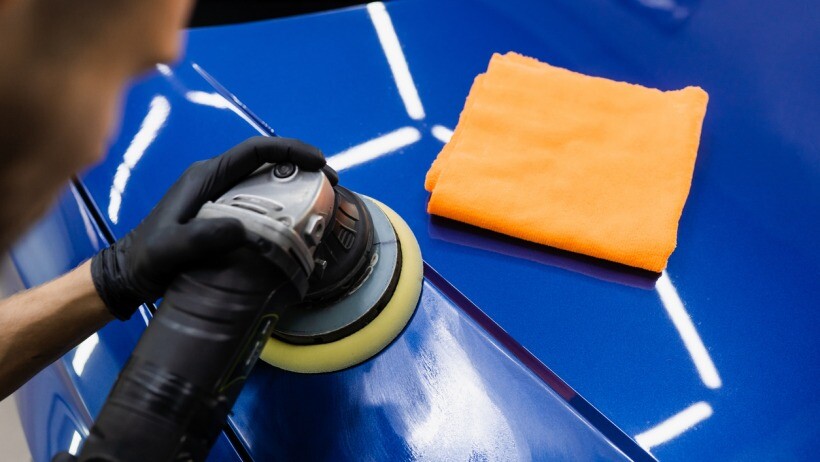 A person uses a power polisher to buff a blue car, with an orange microfiber cloth in the foreground (Source: iStock)
A person uses a power polisher to buff a blue car, with an orange microfiber cloth in the foreground (Source: iStock)
Both auto waxes and polishes require some preparation before application. First, you need to wash the car and rinse the remaining suds. After drying, you may apply the polish or car wax.
Using car polish before waxing a car is recommended to remove it because it removes scratches and other surface imperfections. However, this requires a more rigorous application, especially by hand. Even with a dual-action polisher machine, car polish is more challenging since you should only apply minimal pressure to avoid damaging the paint.
Instead of doing it yourself, it’s best to let a professional handle the application to prevent accidentally leaving scratch marks on the car’s paintwork.
Car wax also requires buffing, but the application process is easier, as the wax can be applied directly to the car’s painted surface. Some car wax paste can be a little more tedious to apply because it forms a haze upon application. But still, it’s not as time-consuming and laborious as the application of a car polish.
In terms of longevity and frequency of reapplication
When it comes to auto polish vs wax, wax lasts longer because of the protective barrier it creates upon application. If you apply liquid wax, expect it to last 6 to 12 months under ideal conditions since it has a balanced formulation of shine and long-lastingness.
However, rain, sun, road debris, and other external factors can diminish the wax’s long-lastingness. This is why, ideally, you should reapply every three to four months to maintain a continuous protective barrier.
Car polish can also last for months, but its longevity depends on the quality of wax you apply after polishing because it lacks a protective barrier. Just make sure to use and apply car polish sparingly, typically one to two times a year only, because it can thin the clear coat, removing the microscopic layer of paint each time it is applied.
Revive your car's shine with Airtasker
Even after knowing and understanding their differences, choosing a car wax or polish can still be confusing. And especially if you’re a new car owner, doing this task alone could end up causing irreversible damage to your car.
So, instead of doing it yourself, why not let car detailing experts at Airtasker handle it for you? They know the best way to wax and polish a car, helping make it look shiny and brand new again. Plus, having experts do the job ensures maximum paint protection on your car’s paintwork.
Learn more about our contributors

Written by Cielo B.
Staff Writer
Cielo is an experienced content writer who has explored various industries throughout her career. Her expertise, founded on a degree in journalism, includes writing about automotive and vehicle maintenance. She’s an avid car enthusiast who loves driving through lush rural areas with her old (but reliable) manual car. Cielo also covers topics like dressmaking, tailoring, and photography since she is a passionate cosplayer who enjoys dressing up as her beloved anime characters.
Car polish vs wax
| Car Polish | Car Wax | |
| Surface Protection |
Enhances car’s appearance but doesn’t provide enough surface protection |
Forms a barrier; protects a car from UV radiation, dirt, dust, bird droppings, and moisture |
| Shine and Gloss |
Only enhances a car’s gloss and shine since its main purpose is to prepare it or waxing |
Adds a deep and glossy shine with a warm, reflective finish |
| Correcting Car Defects |
More effective due to abrasive compounds; removes oxidised paint marks, and levels scratches | Covers and fills scratches and discoloured marks; serves as a temporary solution |
| Cost and Value |
More expensive due to the formulation of abrasive compounds |
More affordable since they’re mostly made from natural ingredients |
| Application | More tedious; requires careful application to avoid damage |
Easier application; requires buffing, but less time-consuming |
| Longevity and Frequency of Reapplication |
Can last for months depending on the quality of wax applied; recommended to use sparingly (one to two times a year) | Lasts 6-12 months; recommended to reapply every three to four months for continuous protection |
FAQs on car polish and car wax
Although car polish can help smoothen a car’s paintwork, it can also remove the clear coat, making it susceptible to environmental damage. This is why you should be careful when using a polishing wax for cars and apply only a little force, especially when using a buffing machine.
It depends on your individual car’s needs and personal preferences. But if you’re looking for a versatile, all-around car wax, liquid wax is the best choice since it offers a good balance of shine and protection. Plus, it’s easy to apply compared to other car wax variations.
Polishing your car before waxing isn’t necessary, but it’s highly recommended because it helps the wax adhere better to a polished surface. Plus, it will result in a smoother finish with an enhanced shine.
Find car detailers, fast
Post a task
Related articles
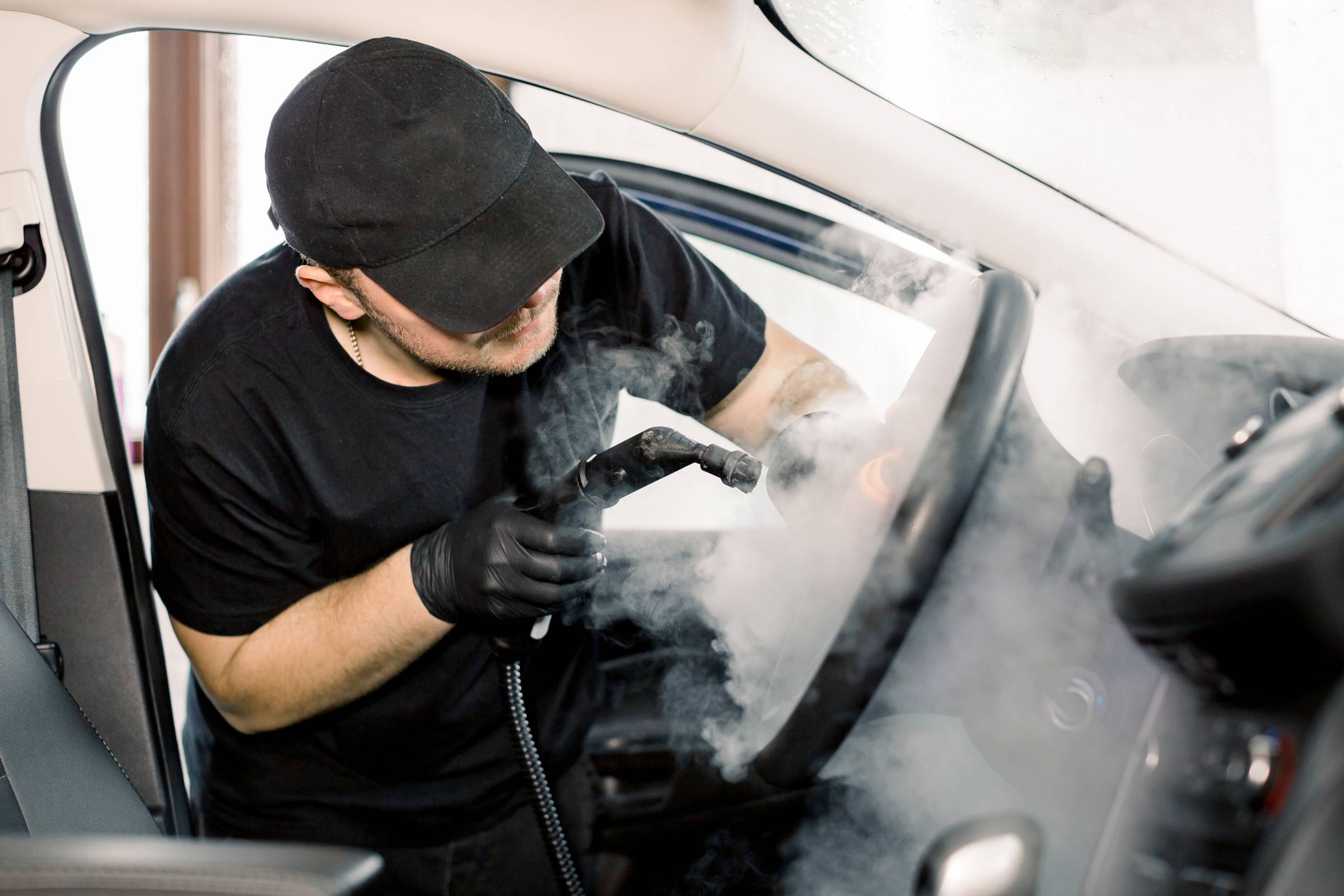
How to detail your own car with ease
Read more
Related price pages
